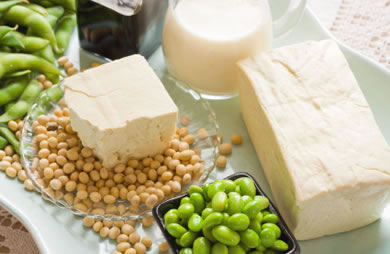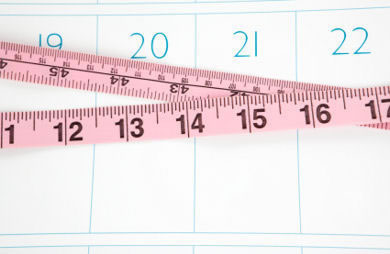|
Editor's Note: Cathy Cram, M.S., is the resident maternal fitness expert on our sister site, BabyFit.com. She writes a monthly series on menopause health and fitness. One of the most visible changes you may notice during the menopausal period is the look of your skin. What may start out as a subtle increase in fine lines and dryness can quickly accelerate as estrogen wanes to crepey, uneven texture and deep wrinkles. Although the aging process plays a role in skin changes, the hormonal shifts of menopause hastens the appearance of pigmented and wrinkled skin, especially in women who smoke, eat a poor diet and are sedentary. The good news is you can improve the health and appearance of your skin by making some positive lifestyle changes and adding a few “silver bullets” to your skincare routine. The leading causes of poor skin health are:
Smokers have premature wrinkling around the mouth from the repetitive motion of smoking and have a “smoker’s pallor” from decreased blood flow to the skin. One of the fastest ways to improve your skin is by stopping smoking, with positive changes in facial skin appearing within weeks of smoking cessation. Drinking alcohol also affects the health and look of your skin by causing short-term skin dehydration and, with chronic alcohol use, liver and other organ stress affects the health and functioning of your skin. Weight loss can cause facial skin to appear slack, as fat stores that support the facial structure shrink. As we age, our facial skin isn’t as resilient and doesn’t snap back as well as youthful skin. The more you gain and lose weight, the more the skin goes through expansion and reduction, so if you’re losing weight, do it slowly and make the changes that will enable you to keep the weight off. Your skin is a window into your body’s health, and dietary deficiencies show up as poor skin tone, dark circles and lack of a healthy glow. A diet rich in vegetables, fruits, lean protein and complex carbs from whole grains provide the building blocks your skin needs for optimal health. Drink plenty of water to provide hydration, and think about taking a fish oil supplement if you don’t include Omega-3 fatty acids (such as walnuts, flaxseed and fish) in your weekly diet. Some studies have shown that eating a diet rich in Omega-3 fatty acids can help with skin health and reduce dry skin. Exercise is one of the best ways to improve the health of your skin. During exercise blood vessels at the surface of the skin dilate, causing that flushed look you get after a good workout. The increased blood flow to the surface of the skin supplies nutrients and oxygen and take away wastes, helping your skin function at peak performance. Who among us hasn’t spent their youth basking in summer rays and working on building their tan? Sadly, there’s not much we can do about past sun exposure, but you can start now with smart sun habits by wearing sunscreen every day, and reapplying it frequently. (Check out the American Academy of Dermatology's facts on sunscreen.) There are some topical skin treatments that have been shown to improve skin health by increasing cell turnover rate and collagen production. Over-the-counter products that contain retinol, a form of vitamin A, can boost exfoliation of the outer layer of skin and stimulate the production of collagen in the deeper layers of the skin. For more intensive skin rejuvenation, a topical prescription retinoid (available as a cream or gel under the brand names Renova, Retin-A, Tazorac or Avage) are very effective for reducing fine lines, uneven skin tone and improving skin texture. These products require that the user start with every other night application to allow time for the skin to adjust to the product. It’s normal to experience some redness, flaking and dryness within the first month of use, and daily sunscreen use is mandatory as these products can increase sun sensitivity. The topical application of certain types of vitamin C has shown clinical improvements in skin texture and may reduce hyperpigmentation. Skin bleaching creams that contain hydroquinone, kojic acid or licorice extract can be effective at reducing hyperpigmented skin (those brown spots that appear with age, pregnancy and sun exposure). Skin care products that contain glycolic, lactic, or salicylic acids speed up cell turnover rate, exposing new, fresh skin and a more luminous look. Daily skincare can make a big difference in how your skin functions and looks. Your local drugstore has a wide array of effective cleansing and treatment products at a low price point. One of my favorites is Neutrogena Acne wash with 2% salicylic acid, which is great for clearing pores and increasing skin turnover rate. If you have dry skin, Cetaphil is a dermatologist favorite, and that brand uses glycerin to gently cleanse. I’ve also invested in a Clarisonic sonic cleanser and found that it’s significantly reduced my menopausal acne flares and leaves my skin feeling extremely clean and soft. Most women think that the cream or lotion they apply to their skin provide moisture to the skin. In reality, many of the products advertised as moisturizers are really occlusives, meaning they form a barrier on the skin surface that prevents evaporation of water from the top layer of the skin. Products that contain petrolatum, lanolin, dimethicone, cocoa butter, and cosmetic grade waxes all provide a heavy layer to protect skin. Products that truly moisturize skin by attracting water are called humectants. These products draw water to the skin surface and are very beneficial for dry skin. Some of the most effective humectants are hyaluranic acid, glycerin, urea and lactic acid. To achieve long lasting moisturization of your skin, apply a humectant based product after showering or bathing, and once it is absorbed, seal the skin with an application of an occlusive-based product. There has been a growth in skincare products targeted for mature skin, with ingredients that range from hormones to cutting edge peptides, but there hasn’t been enough research to show whether these products are worth the cost. The products and prescriptions mentioned above have all shown significant results when used consistently and correctly, so if you’re interested in exploring more than just a cleanser and moisturizer for your skin care it’s a good idea to consult with a dermatologist for a treatment that’s right for your skin concerns. There are more intensive treatments that can improve skin wrinkling, texture and tone, but there are increased side effects with these treatments as well. Intense pulsed light (IPL), fractional lasers, and deep chemical peels are just some of the treatments available from dermatologists and plastic surgeons, and you should explore the pros/cons before trying any treatments that have a risk of scarring, burns or other complications. My advice is to start with the basics of diet, exercise and lifestyle changes, and think about adding some of the topical treatments listed above. You may find that the glow you get from just these minor changes enhance your skin without a lot of expense and risk. Selected resources: How did your skin change during and after menopause? How did you deal with it? What worked and what didn't? Catherine Cram, M.S. is the author of Fit Pregnancy For Dummies, and the owner of Comprehensive Fitness Consulting, LLC. Catherine's company specializes in providing prenatal postpartum fitness information to health-care professionals. |
Popular Entries
More From SparkPeople
|





















